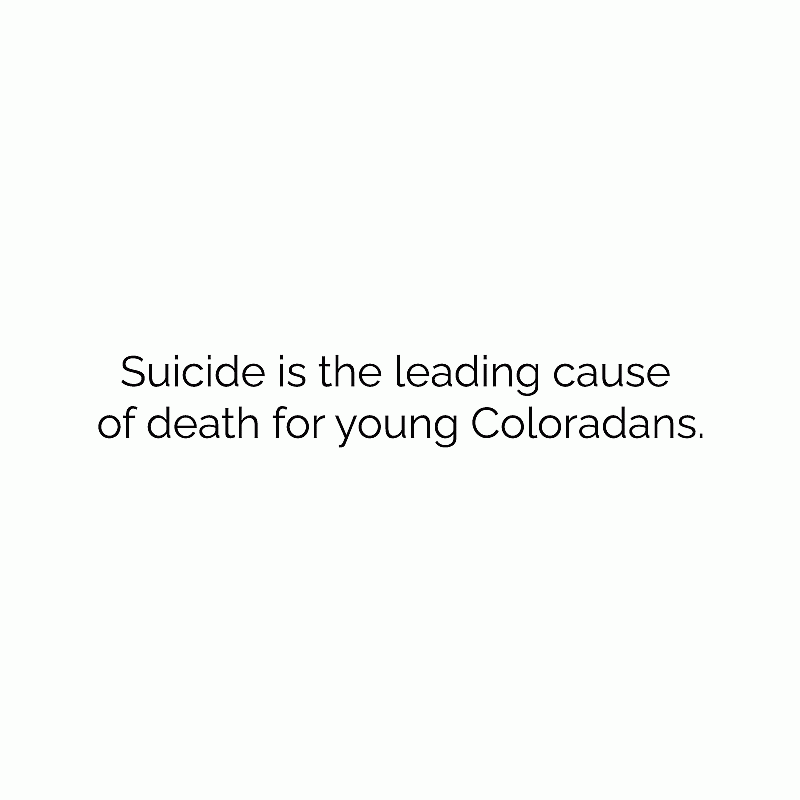Colorado’s Safe2Tell reports 4% rise in suicide tips last school year as overall volume fell during pandemic
This story is part of the Crisis Point project led by Jessica Seaman, a participant in the 2019 National Fellowship who is investigating youth suicide and mental health in Colorado.
Her other stories in this project include:
Youth suicide rates during the pandemic foreshadow what experts say will be a “tsunami of need”
What Colorado can learn from a neighboring state’s new approach to stopping youth suicide

The Denver Post
The number of potential suicides reported to Safe2Tell rose 4% during the 2019-20 school year, according to the Colorado program’s annual report, which provides for the first time a more detailed look at what happens after tips are made to the anonymous reporting system.
Safe2Tell recorded 3,821 reports about students at risk of suicide, up from 3,668 such reports during the 2018-19 school year. And in at least 35% of those cases, the student was sent to counseling either in school or with a mental health professional, according to information included for the first time in the program’s annual report.
The increase in suicide reports during the last school year is additionally notable because the overall number of reports to Safe2Tell declined 7% to 20,822 during that period as students moved to remote learning at the start of the coronavirus pandemic.
“Coloradans have felt the deep impacts of the pandemic as we navigate these unprecedented times together,” said Essi Ellis, director of Safe2Tell, in a statement accompanying the release of the report Tuesday.
Safe2Tell is a statewide anonymous tip line for students to report concerning behavior. It was created to address youth violence in Colorado, but in recent years the program has seen more and more students reaching out to report classmates at risk of suicide.
Previously, Safe2Tell only provided additional information about responses by detailing the number of self-reported mental-health tips that were transferred to Colorado Crisis Services. But that’s a small fraction of overall reports; in the 2019-20 school year, Safe2Tell received 137 such tips, and of those, 15 were transferred to the crisis line.
The release of more detailed data about the outcomes of Safe2Tell reports follows reporting by The Denver Post that found little public accountability about what happens after authorities respond to tips, because of a lack of information collected by the Colorado Attorney General’s Office, which runs the program. A 2014 state law also limits the public release of such information.
The Post also reported that while Safe2Tell is fielding more reports about children and teens at risk of suicide, police are among those acting on the reports — a response that experts said can traumatize students struggling with their mental health.
The data about what happens after Safe2Tell reports are received that’s included in the 2019-20 annual report has not been made public before. The attorney general’s office declined to provide it to The Post when the newspaper requested it during the reporting of its Crisis Point project over the last year.
Lawrence Pacheco, spokesman for the attorney general, previously told The Post that local authorities “are not required to report this information to Safe2Tell, and the limited information we have from those agencies that do report is general, incomplete and not useful to gain a broader understanding of outcomes.”
In 2018, state lawmakers passed a bill providing Safe2Tell funding to hire a data analyst. The legislation also required the program to create an annual report analyzing data from the program, including a summary of outcomes and actions taken after tips are made to Safe2Tell “to the extent the information is available,” beginning in late 2018.
Safe2Tell hired a data analyst in mid-2019, Pacheco said, and is now able to provide a more detailed data summary in its annual reports.
State officials have said that when Safe2Tell receives tips, they are sent to schools and law enforcement — and it’s up to local officials to decide who and how to respond.
The additional outcome data provided by Safe2Tell this year is limited. It doesn’t reveal how often police respond to mental health crises compared to medical professionals or school officials. It’s also unclear how complete the data is, since the attorney general’s office has said local officials aren’t required to report this information back to the program.
A tip also can have multiple outcomes. For example, a suicide report can lead to a welfare check, parents being notified and mental health counseling.
What the data does show is that of the outcomes that were reported back to the program last school year, at least 2,052 resulted in welfare checks conducted by either school officials or police following a tip about someone at risk of suicide.
And in 2,803 cases, parents were notified after a suicide report, while in 1,334 instances a student was sent to counseling either in school or with a mental health professional in the community, according to the report.
Mental health experts argue that data on what type of help was offered to students after a Safe2Tell response — and knowing who responds to the reports — is important so that officials know whether the teens are receiving mental health care and what barriers remain to getting help.
“It’s moving in the right direction in identifying are tipsters getting an appropriate response to what the need is,” said Sarah Davidon, a Denver-area mental health policy consultant. “It still doesn’t tell us what happened. Are people safer at the community level? Are there fewer suicides because of this?”
[This article was originally published by The Denver Post.]

